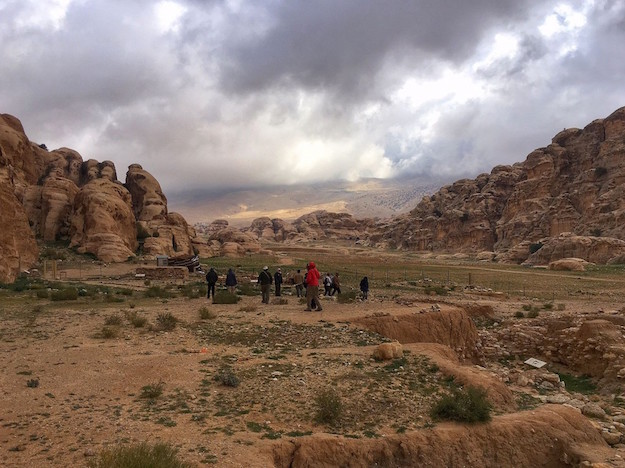A short distance north of Petra, Jordan, lies an area of pale honey coloured rock – Al Beidha in Arabic, ‘the white one’ – the next most important site in Wadi Musa, also included in Petra's inscription as a UNESCO World Heritage Site. Here in the 1st century AD the Nabataeans established a commercial suburb, a place for trading caravans to stop en route between south Arabia and the Mediterranean.
 Photo Credit: Martin Charlton
Photo Credit: Martin Charlton
Well before the Nabateans, however, area’s fertile land had been exploited for many millennia by Neolithic groups, who settled here around 7000 BC, hunting animals with flint weapons and gathering wild plants to eat. They also grew wheat and barley and kept goats and sheep. It was first excavated in 1957 when three periods of occupation were detected: the Natufian period in the 11th millennium BC, a Pre-Pottery Neolithic B village with masonry construction in the 7th millennium BC, and a Nabatean period dating to the 1st or 2nd century BC.
Natufian Beidha is characterized as a seasonal encampment, repeatedly occupied over a long period of time. Evidence from lithics recovered along with the layout and position of hearths and roasting areas suggested the occupants were primarily engaged in hunting related activities. This was supported by the absence of permanent buildings, storage, burials and large stone implements.
During the Neolithic stage, the villagers used stone masonry and built a wall around the settlement of round houses with subterranean floors. Many of the materials recovered came from some distance and included Anatolian obsidian and mother of pearl from the Red Sea. Evidence shows it was destroyed by fire c. 6650 BC and then rebuilt with rectangular, overground buildings and specialized workshops. The transition to right-angled buildings shows an important development in human society that may have contributed the eventual development of cities.
Spending three nights in the region allows participants on our tour to explore this very special and important site, often overlooked by groups rushing through in a day. Spending two full days here allows for this very special visit and the chance to re-enter the main site of Petra for relaxed independent exploration on day two.
Source: Wikipedia
Visit Petra and Al Beidha on all of your tours that include Jordan:
Jordan
JO1 | 8 Days | Details
Jordan & Israel
JO4 | 17 Days | Details
Jordan, Israel & Egypt
JO9 | 29 Days | Details
Israel with Petra Extension
IS8 | 14 Days | Details
Egypt & Jordan
EG5 | 21 Days | Details
All 2017 tours including EGYPT are discounted